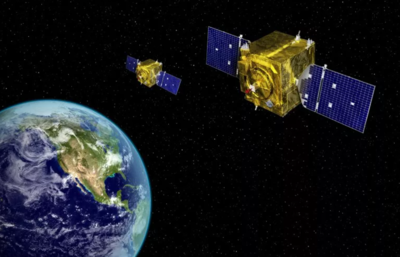ARTICLE AD BOX

China’s activities in space have recently taken a quiet but significant turn, which might be a sign of a major evolution in how we think about satellite operations. In today’s world, technology, sustainability, and national security are intertwined with one another.
Such missions seem to explore the possibilities far above Earth.Recent movements by China in geostationary orbit are being closely watched by the space community, which has posted the observations on its official X handle.
On January 6, 2025, a Long March 3B rocket launched from Xichang carried Shijian‑25 into geostationary transfer orbit. Built by Shanghai Academy of Spaceflight Technology (SAST), it’s officially tasked with “satellite fuel replenishment and life extension service technology verification,” reported Spacenews.com.Shijian-21 was launched in October 2021 on a Long March 3B rocket. Its mission was to dock with an old, no longer working satellite called Beidou-2 G2 and move it to a safe, out-of-the-way orbit above the regular geostationary satellites. This “graveyard orbit” helps keep space clear and prevents collisions with active satellites.
Both these Chinese satellites made a close approach in June
Ground‑based tracking by S2A Systems detected Shijian‑21 and ‑25 converging in GEO during mid‑June.
On June 14, they were “virtually unresolvable from the other,” indicating a close rendezvous, which is likely expected to be a docking test, as reported by Spacenews.com. Observations also noted earlier manoeuvres on June 13 and 14, and an expected rendezvous around June 11 based on their orbital trajectories.
How can this test be useful?
Refuelling and servicing satellites in GEO could drastically extend their service life, reduce space debris, and lower launch demands.
Shijian‑25 was intended to rendezvous with Shijian‑21 because they are in a phased orbit, which means sharing orbital elements but staggered in longitude, which can result in lowering the fuel needed for proximity operations.Although this mission is described as a civilian technology test, the close movements of the satellites have raised some concerns. According to COMSPOC OPS on social media, two US satellites, called USA 270 and USA 271, are nearby, probably keeping an eye on the Chinese satellites.
COMSPOC explained, “USA 270 and 271 now flank SJ-21 and SJ-25 from the east and west—potentially enabling favorable sun angles depending on the timing of closest approach.
”According to COMSPOC, the ongoing activity between China's Shijian-21 and Shijian-25 satellites is unfolding in a particularly busy and sensitive area of geostationary orbit (GEO).COMSPOC also stated clearly, “While these U.S. assets aren’t directly involved, their proximity adds complexity to the local SSA picture — and raises strategic awareness concerns.” In other words, even if there’s no direct interaction, just being close in such a critical orbital region makes the dynamics more complicated and potentially riskier.



.png)
.png)
.png)
















 3 hours ago
5
3 hours ago
5









 English (US) ·
English (US) ·